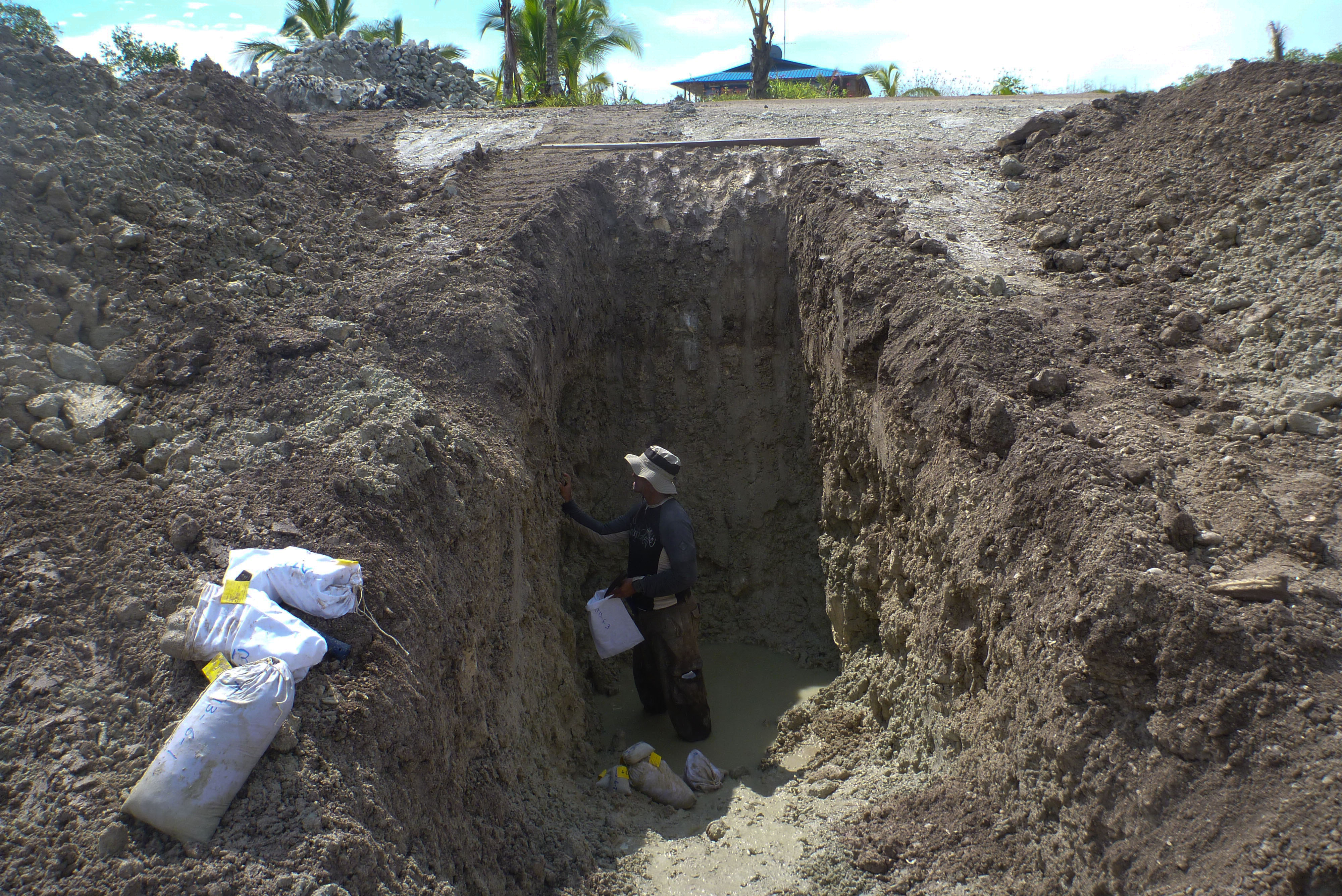Plenty of Gloom With a Dash of Hope: Fossils Help Identify a Lone “Bright Spot” Reef in a Similar State to Coral Reefs Before Human Impact

Smithsonian paleontologist, Felix, Rodriguez collects coral specimens from fossil reef
Credit: Aaron O’Dea
Researchers at the Smithsonian Tropical Research Institute (STRI) discovered a massive, 7,000-year-old fossilized coral reef near the institute’s Bocas del Toro Research Station in Panama. Spanning about 50 hectares, it rewards paleontologists with an unusual glimpse of a “pristine” reef that formed before humans arrived.
“All modern reefs in the Caribbean have been impacted in some way by humans,” said Aaron O’Dea, STRI staff scientist. “We wanted to quantify that impact by comparing reefs that formed before and after human settlement.”
Using a large excavator, the team dug 4-meter-deep trenches into the fossil reef and bagged samples of rubble. They dated the reef with high-resolution radiometric dating.
“The fossils are exquisitely preserved,” O’Dea said. “We found branching corals in life position with chemically pristine fossil preservation. Now we are classifying everything from snails and clams to sea urchins, sponge spicules and shark dermal denticles.”
Archaeological evidence from Bocas del Toro indicates that settlers did not make extensive use of marine resources until around 2,000 years ago. So, the fossilized reef predates human impact by a few thousand years. After comparing fossilized corals with corals from nearby reefs, the team was surprised to find a modern reef that closely resembled the pre-settlement reef. They dubbed this a “bright spot,” and asked why this reef is more similar to the prehistoric reef than the others.
“Most of the reefs in Bocas today look nothing like they did 7,000 years ago,” said Andrew Altieri, former STRI scientist and now assistant professor at the University of Florida, Gainesville. “That confirmed our expectations given what we know about recent deterioration caused by humans. So we were really surprised when we discovered one modern reef that is indistinguishable in its community composition to the ancient reefs.”
When the team cored this “bright spot” reef, they discovered that it had been in this state for centuries. “This suggests resilience,” said Mauro Lepore, former STRI post-doctoral fellow. “And that kind of information can be really powerful for conservation.”
“This finding begs the question of what’s so special about this reef,” O’Dea said. The team evaluated current environmental factors such as water quality, hypoxia, temperature, aspect and shape, but none of those explained why this reef is more like the pre-human impact reef. The only clues were that it was the furthest away from human activity and that the staghorn coral, which dominates the reef, had previously been shown to consist of clones resilient to white band disease.
More work is needed to understand why this bright spot persists in the face of human impacts. However, the team propose that these kinds of fossil records can help in conservation by establishing which ecosystems have been irrevocably altered and those which preserve elements of what was natural. Once identified, these “bright spots” could act as a guide to conserve other ecosystems.
# # #
O’Dea, A, Lepore, M., Altieri, A.H. et al. 2020 Defining variation in pre-human ecosystems can guide conservation: An example from a Caribbean coral reef. Sci Rep 10, 2922. https://www.nature.com/articles/s41598-020-59436-y
SI-69-2020
Beth King
202-633-4700 x 28216
